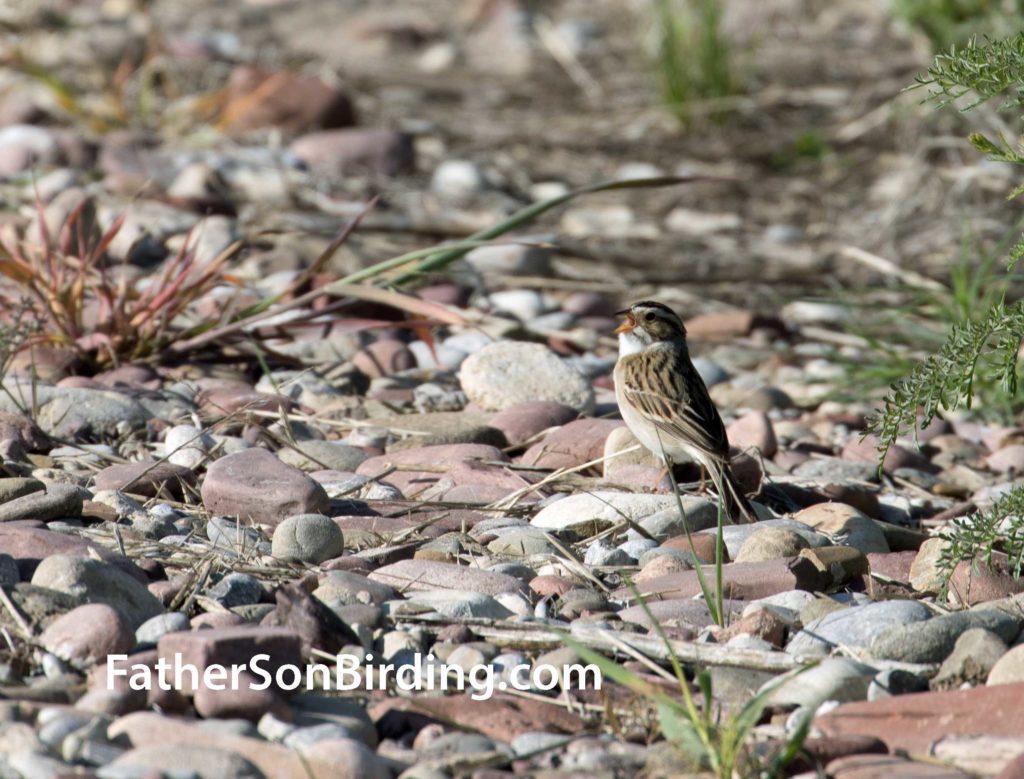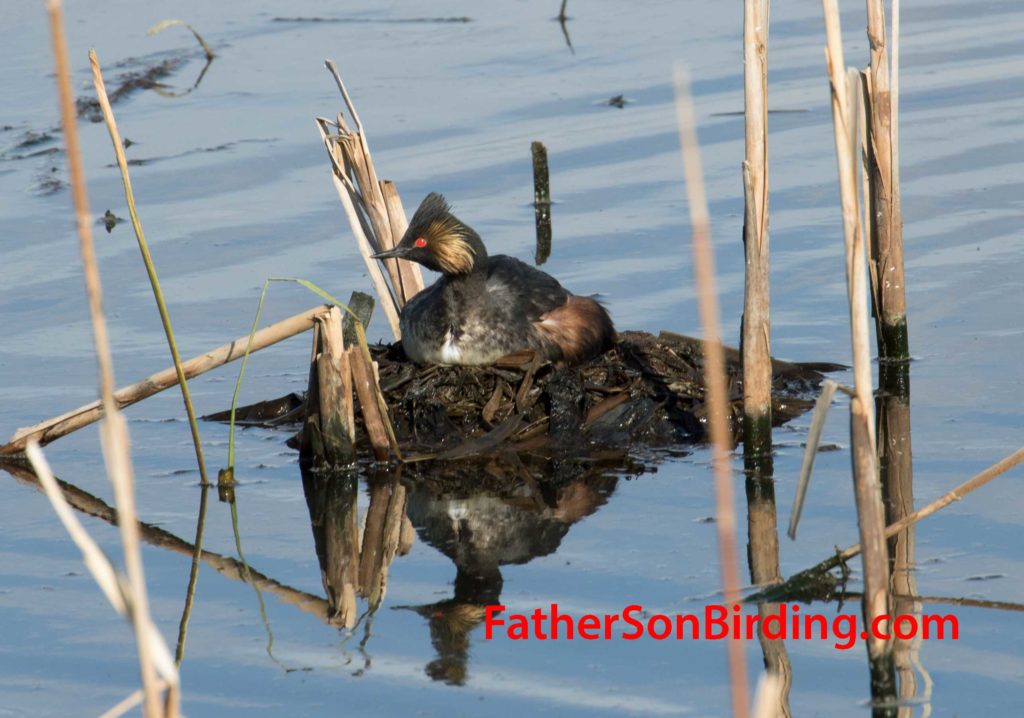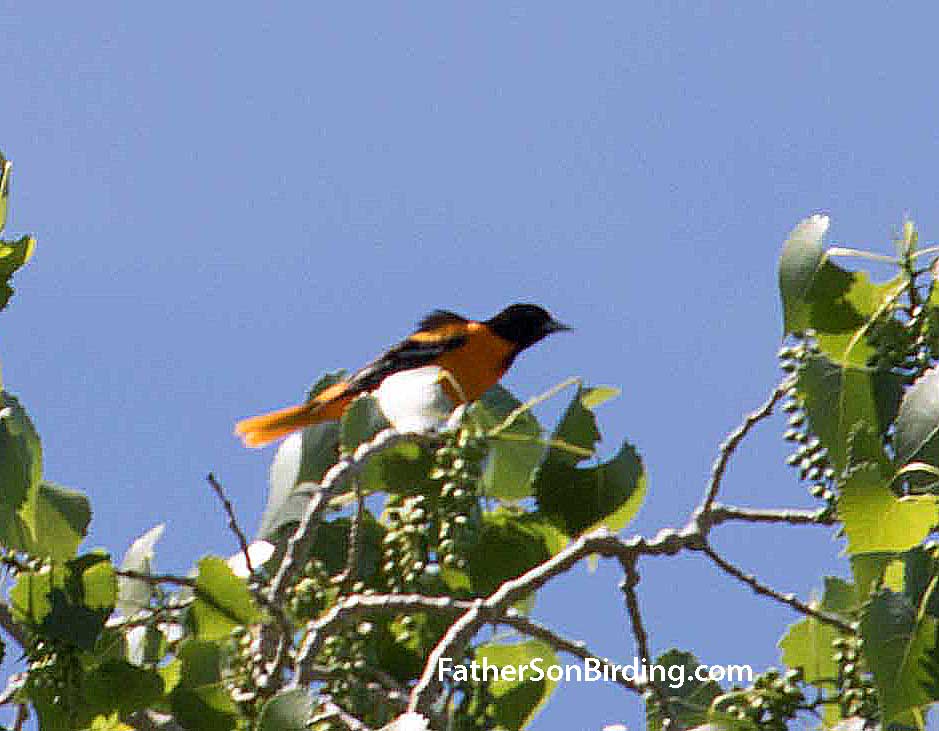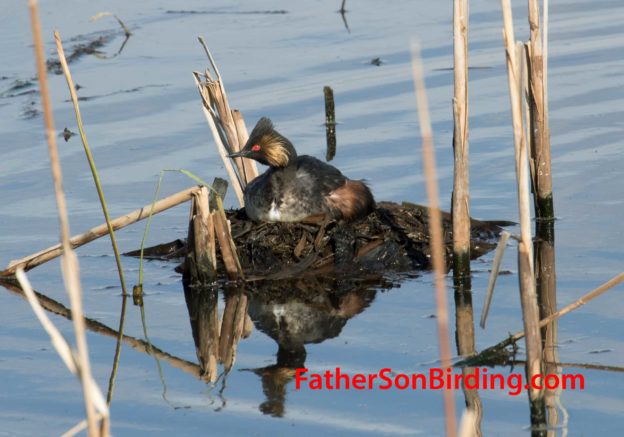
Clay-colored Sparrow.
Braden here again, to continue our birding trip to Malta.
The next morning, after a brief detour at Malta’s Trafton Park, we thought up our slogan, “Bowdoin or Bust”. Last June, when we had visited Bowdoin National Wildlife Refuge last, it had taken us at least forty five minutes to get there from Malta thanks to heavy construction on the way there. This time, thankfully, the road seemed all right, and we made it in about 20 minutes. We parked at the visitor center, shot bug-killing chemicals all over our exposed skin, and hit the pond loop.
The cottonwoods surrounding the small pond were alive with calls; some I knew, like the che-bek of the Least Flycatcher. Others were foreign to my ears. Our target bird for this area was Baltimore Oriole, an uncommon Montana migrant. We had searched for them at Trafton Park last night, with no luck, and now hoped to see the one that had been reported here recently. No oriole. There was also a surprising lack of Great Horned Owls; we had seen four here last summer.
Next we entered the Auto Tour Loop, a 15-mile drive around the huge lake that Bowdoin was famous for. The American White Pelican, Bowdoin’s biggest celebrity, nested here in huge numbers. As we began the drive around the lake, I called stop so we could identify a small sparrow perched on a shrub to the left of the road. This was the first, but definitely not the last “sparrow stop” of the day.
We continued up the road, identifying Clay-colored, Savannah and Grasshopper Sparrows every few minutes. At one stop, we met some fellow birders from Bigfork, near Flathead Lake, and they pointed out the strangely-metallic song of the grassland-dependent Baird’s Sparrow.
The drive was great, better than we expected. We saw grebes, ducks and shorebirds(including a Black-bellied plover) in large numbers on the lake, and ear-birded the surrounding prairie. At the end of the loop, as we began entering widely-spaced trees, a bird on the wing caught our attention.

Eared Grebe on nest.
“Turkey Vulture!” I said, watching the large raptor try to stabilize in the wind. Suddenly, though, another bird took off below it. The bird flew like a flicker, but had a very unusual black and white pattern on its back and wings. We could not see the head.
At the same time, my dad and I turned towards each other and said, “Red-headed Woodpecker!” My dad gunned the engine and we chased it. As it crested the hill, though, we lost it and couldn’t relocate it again.
Bewildered and sad, we took another walk around the visitor center pond. Nothing new showed itself—the day grew hot and the birds started settling down. As we finished, though, I spotted a tangerine-colored bird swoop down from a cottonwood into some distant trees.
“Daddy! Oriole!”
I didn’t want to get too excited, as both Bullock’s and Orchard were also possible, but I hoped for our target, the Baltimore. And as it popped back up into view, the neon orange body and black head confirmed it. We saw a Baltimore Oriole!
Bowdoin had not disappointed.

Baltimore Oriole, Bowdoin NWR. Bad Photo, great experience.


The Great Baltimore Oriole Quest! (Glad it wasn’t a NY Yankee Quest, or I would have cancelled my pricey subscription to this blog. Ahem.) Hey, a bad photo beats no photo for us birder folk, especially when you are seeking a specific species and an ID is on the line. Glad you guys succeeded! What’s next, a St. Louis Cardinal? A Toronto Blue Jay? ;-]
In my experience, those “ball” parks have a surprising lack of species diversity. And they don’t let you walk around very much, the birders are all expected to stay in their assigned seats! (Well, I never!) And unless a gull or 100 settle into the “park,” the closest I’ve gotten to a bird there is lots of goose eggs, which they keep posting on a “scoreboard” every time they can’t find anything else.
Maybe the reason there are so few birds is because the bats have taken over–I mean, the noises they make are sure to scare any wildlife nearby. Actually, though, our local stadium hosts a pair of Osprey that nest on one of the lights overlooking the field.
Roger, last weekend we actually nabbed a western Montana Blue Jay near Glacier NP–less known and rarer than Toronto’s, but in my opinion a better score…
Hail to the Baltimore….. once again, wonderful reading. I have my very own
Hooded Oriole on my patio every
morning. So fortunate….I call him “Skit.”
You guessed it… terribly skittish bird! Adore these blogs! Keep em comin’
Love, Penny
Thank you so much, Penny! Yeah, Orioles are known for not being the most cooperative birds…
Great writing, Big B! Congrats!
Thank you! Looking forward to Iceland!
❤️
Good reading about you latest birding conqest. Gramma and I are sitting and viewing the ocean waves.Mid fifties and sunny.Jusy relaxing and resting.we’ve been to and from Depoe Bay to eat view whales ‘ watch boats come in to the very narrow bay approach,,many of which needed help from a coast guard cutter.Also took a picture of a bay seal sunbathing on rocks below. Seems like some from of birding andwritting is in your future.Say hi to Tessa and see you and your MOM very soon. Love over and out.Grampa
Hi Grampa,
I’m glad you and Grandpa are getting to relax–you definitely deserve it. I hope you are having fun, and I’m looking forward to Iceland!
Love,
Braden